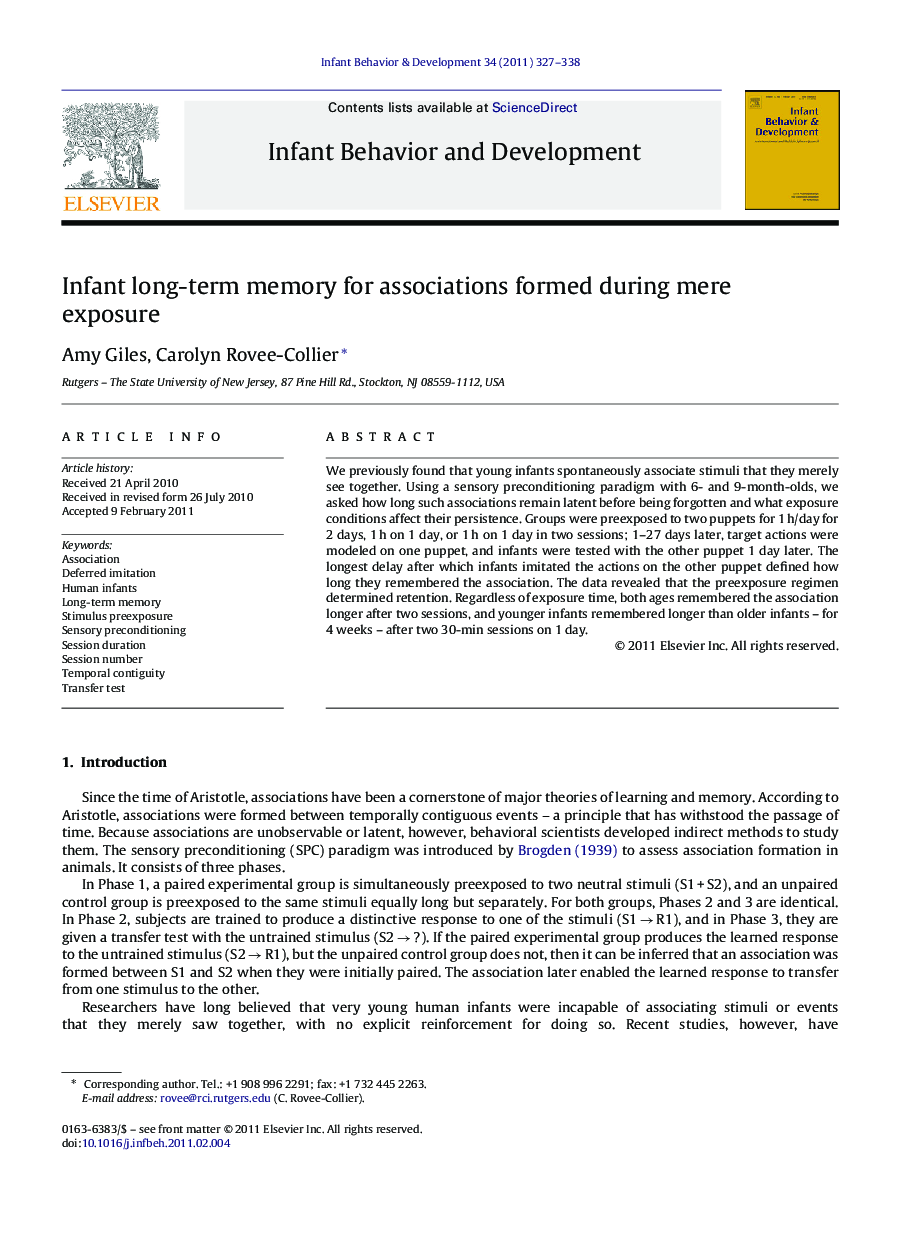| Article ID | Journal | Published Year | Pages | File Type |
|---|---|---|---|---|
| 917396 | Infant Behavior and Development | 2011 | 12 Pages |
We previously found that young infants spontaneously associate stimuli that they merely see together. Using a sensory preconditioning paradigm with 6- and 9-month-olds, we asked how long such associations remain latent before being forgotten and what exposure conditions affect their persistence. Groups were preexposed to two puppets for 1 h/day for 2 days, 1 h on 1 day, or 1 h on 1 day in two sessions; 1–27 days later, target actions were modeled on one puppet, and infants were tested with the other puppet 1 day later. The longest delay after which infants imitated the actions on the other puppet defined how long they remembered the association. The data revealed that the preexposure regimen determined retention. Regardless of exposure time, both ages remembered the association longer after two sessions, and younger infants remembered longer than older infants – for 4 weeks – after two 30-min sessions on 1 day.
Research highlights► Six- and nine-month-old infants formed a long-lasting association between two objects. ► The association was formed by mere exposure, without reinforcement for doing so. ► It remained latent up to 28 days, when it was successfully retrieved and expressed. ► The number of exposure sessions, not total exposure time, determined its longevity. ► The retention benefit of more exposure sessions was greatest at 6 months.
